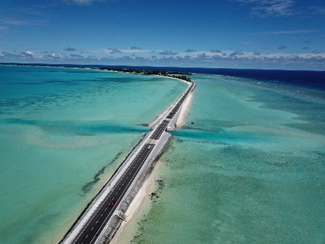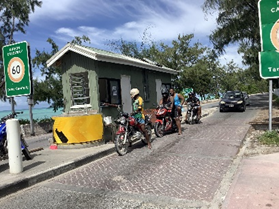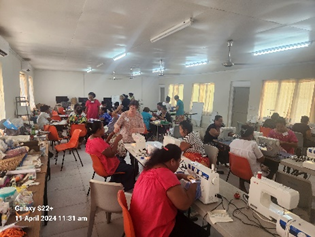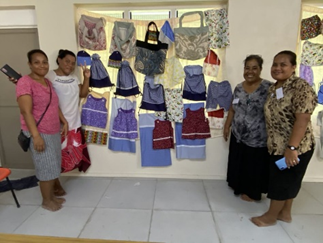SewAid in Kiribati
- Barry Antees
- Apr 26, 2024
- 3 min read
SewAid offers women in very poor countries the opportunity to learn to sew. It provides them with the machines, equipment, and skills to enable them to be sustainable. The program was founded by Mr Tony Castley, (supported by his family business Sewgroup International)


In April 2024, the SewAid team of 5 teachers, sewing machine mechanic, and support person journeyed to Kiribati for a 2-week sewing programme. Fiji Airlines fly into Kiribati twice a week, and so the journey was from Australia to Fiji, and then from Fiji to Kiribati.
Kiribati is a tiny island nation in the Pacific Ocean, with 33 islands (atolls) scattered over 3.5 million sq.km of water. Its population is about 130,000, with about half living in the capital Tarawa. There is North Tarawa and South Tarawa, and the majority are squeezed into South Tarawa. We spent all our time on South Tarawa, between the airport at Bonriki and the port at Betio, a distance of about 30 kilometres. There is single road on South Tarawa with a speed limit of 40 km/hr, and with causeways linking the islands
Nippon Causeway (3 km) built by Japanese, with 20 cents toll.
The AMAK Women’s Centre, recently been substantially renovated and funded by the Australian Government, was to be the sewing centre. There was a “ handing over “ ceremony, which included the Australian High Commission Karen Bray and the Kiribati First Lady .
Twenty-seven ladies were taught over 8 days, with three beginner classes and two advanced classes. A very large number of bags, dresses, shirts, shorts and craft items were made.
Mario, the mechanic, assisted by Zac, a high school boy, trained several people on the maintenance of the machines, and repaired many local machines. Six of the team left after 8 full days of sewing, while , Rhonda, Vera, and Fay, stayed on for another 3 days to train the teachers in teaching methods and techniques and set up the ongoing sewing courses for AMAK.
There is a lot of aid going into Kiribati, and we met quite a number of people involved with various projects. There was a lot of building - salination plants, a hospital, Chinese and Australian embassies, amongst others. Life is quite difficult for the locals – rainwater is the only fresh water; electricity is either solar power or by generators (although many villages do not have power); fish, chicken and pork are the local proteins. There is very little food grown on the island – a lot of things are imported. The housing is very basic.
During our stay, we met with the local Rotary Club, who also hosted the District Governor of District 9920. And we had afternoon tea with the High Commissioner of Australia, Karen Bray. Thank you also to David and Julie, 2 Australian volunteers staying there for a year, who helped us get familiar with the local area.
A lot of planning goes into these visits. Our thanks go to Tony who spent many months organising the project and trip details, and to Eremita in Kiribati who worked extremely hard to make the project a reality in her country. Many thanks to Rotary Donations-in-Kind in Melbourne for all their assistance in getting the container of goods shipped to Kiribati in November 2023. Many thanks to our donors and suppliers, including Sewgroup International, Hobbysew Australia, Janome and Singer sewing machines, Simplicity patterns, Rotary Down Under and others. The ladies who were taught were very enthusiastic and very quick to learn. We do hope that their newfound skills will help to change their lives.
The team
Teachers: Rhonda Whitton, Vera Liondas, Jenny Eggleston, Fay Kitto, Jennie Beeston
Admin and Management: Tony Castley, Paula Vincent, Erimeta Barko (Kiribati) Mechanical Training: Mario Azarpadi, Zac Vincent.
By Vera Liondas
Member of the Rotary Club of Environment and Habitat













Comments